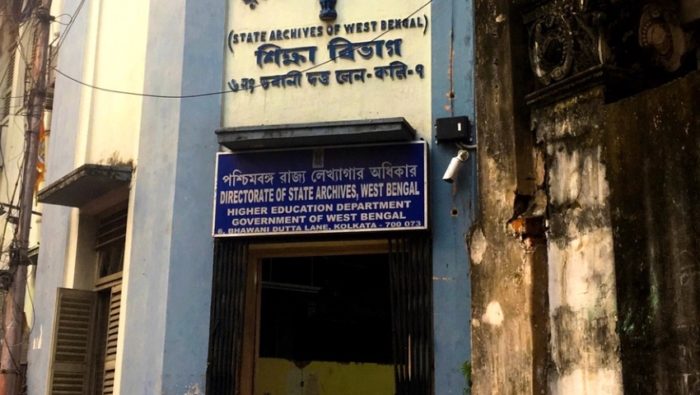
Writing Indenture—The Petrichor of Diaspora

‘Water is the first thing in my imagination. Over the reaches of the eyes at Guaya when I was a little girl, I knew that there was still more water. All beginning in water, all ending in water.’ Dionne Brand, A Map to the Door of No Return (Vintage Canada, 2001)
Petrichor is a word used in mineral chemistry to describe the smell produced after rain has fallen on dry earth. It is not merely the smell of wet dirt, but the smell of decomposition and the biproduct of a strand of bacteria. It is evidence of an unseen universe of connectivity, to the past and to non-human life. The smell of rain triggers memory, and the rain itself connects us spatially to one another, circling the planet, in and through its living organisms. The way we understand diaspora, the porousness of our geopolitical borders and the borders of our identity, is characterised by the fluidity and contemporaneity between the past and the present, the here and there. These are the qualities of water—its ability to traverse, transport, transform, inhabit, reconstitute, nourish, erode, and eviscerate. What, then, might we glean from the properties of water for grappling with what makes diasporic thinking on colonial history diasporic?
I am centrally preoccupied with the use of water as a motif for engaging with the temporal and spatial upheaval involved in diasporic articulations of history in the context of colonial labour migration. Within this frame, I examine the confluence of death, ghosts, and memory in writings of and by descendants of those who migrated. How do we engage sensorily with stories, photos and cultural and artistic imaginings, and the confluences that, like Brand recalls, we cannot see but we know are there, beyond the visible horizon of the sea? Some stories are inaccessible given the nature of archival research—descendants of those indentured are dispersed throughout the world, and the archives that catalogue their journeys, undigitized and remote, some disintegrating, are out of reach. These documents contain an incomplete but vital dimension of indenture’s history. In my current work, I engage the archival history of indenture with the questions we ask of water, by way of the broader ecologies of the writings of Black feminist and Caribbean diaspora thinkers, and other critical interdisciplinary scholars, including theoretical works, fiction, poetry and memoir. The bibliography of the study of indenture is vast, but without the rigours of imagination, one might not realise it.
The British colonial indentureship system moved over a million South and East Asian people to plantations across the colonial territories during the 19th and early 20th centuries. The British system was implemented mainly to prop up the agricultural sectors, which had lost free labour with the formal ending of enslavement across the territories in 1833. The indenture contracts varied, but many of them, written in Urdu, Hindi, and English for signatories who were often unable to read any language, compelled workers to work for five years. Many of the workers did not know what part of the world they would find themselves in. Most indentured never returned, having made lives abroad or lost connections to the places they left behind. For the descendants of the indentured, and for researchers examining this history, the details of their experiences, from the banal to the sublime, are often swallowed and drowned in the texts of the formal archives and re-emerge to some degree in scholarly and artistic work.
Towards an Integrated Colonial Archive is a joint National Endowment for the Humanities and Arts and Humanities Research Council project, that I co-lead with my New York based colleague Dr Tao Leigh Goffe. The project aims to create an online space to bring together a limited set of specialist scholarly work, visual material, music, art, and literature. The project connects impulses from various creators to increase the use and range of applications of work that is typically siloed. The platform seeks to disrupt and reimagine, modestly in the first instance, the sense of temporality that pervades archival collections. Historical material does not consist solely of a set of texts arranged in separate collections, but rather a range of artefacts, recorded impulses, and indeed textual and artistic material embedded in sets of narratives, framings, and openings for understanding inflections of our present and future. The mangrove, an organising concept in our project, constitutes an important framing device for what we imagine a temporally, disciplinarily disrupted curation of holdings is capable of doing. This disruption opens a space for sustained engagement at the juncture of ecology, diasporic thought, and legacies of colonial violence. We hope our work sparks conversations that enliven the already burgeoning research underway on the indentureship period, and on the diverse lives of those inhabiting the multiple diasporic communities in Jamaica and the Caribbean more generally.
Author’s note: This blog post is an output from a research project funded jointly by the Arts and Humanities Research Council and the National Endowment for the Humanities Towards an Integrated Colonial Archive (2022–2024). The project team consists of Eddie Bruce-Jones (Principal Investigator, AHRC) and Tao Leigh Goffe (Principal Investigator, NEH).

